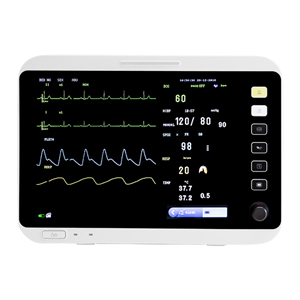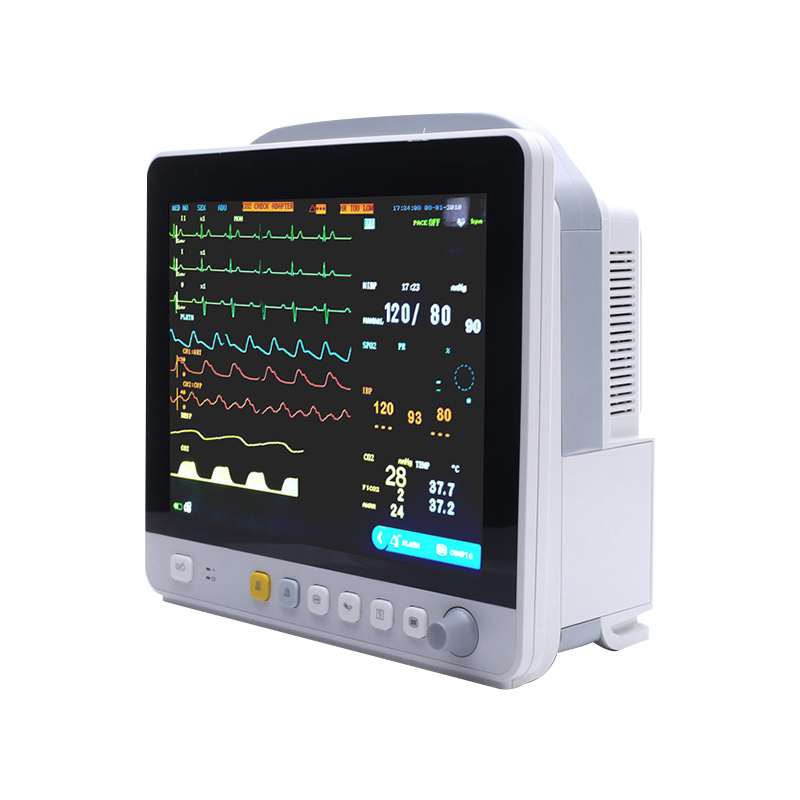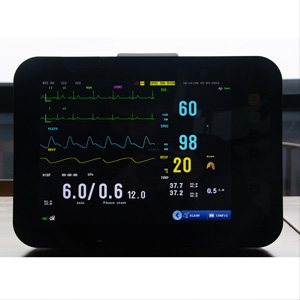The patient monitor is a type of medical device that measures and controls the physiological parameters of a patient, and can be compared with normal parameter values, and an alarm can be issued if there is an excess. As an important first-aid device, it is an essential first-aid device for disease first-aid centers, emergency departments of all levels of hospitals, operating rooms and other medical institutions and accident rescue scenes. According to different functions and applicable groups, the patient monitor can be divided into various categories.
1. According to the monitoring parameters: it can be single-parameter monitor, multi-function & multi-parameter monitor, plug-in combined monitor.
Single-parameter monitor: Such as NIBP monitor, SpO2 monitor, ECG monitor etc.
Multiparameter monitor: It can monitor ECG, RESP, TEMP, NIBP, SpO2 and other parameters at the same time.
Plug-in combined monitor: It is composed of separate, detachable physiological parameter modules and a monitor host. Users can choose different plug-in modules according to their own requirements to form a monitor suitable for their special requirements.
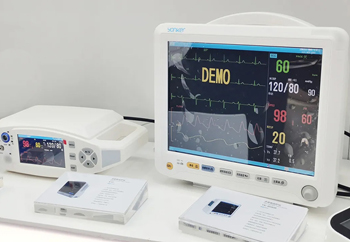
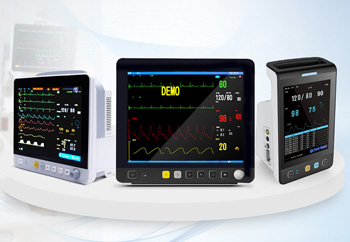
2. According to the function it can divided into: bedside monitor (six parameters monitor), central monitor, ECG machine (the most original one), fetal doppler monitor, fetal monitor, intracranial pressure monitor, defibrillation monitor, maternal-fetal monitor, dynamic ECG monitor, etc.
Bedside monitor: The monitor installed at the bedside and connected with the patient can continuously monitor various physiological parameters or certain states of the patient, and display alarms or records. It can also work with the central monitor.
ECG: It is one of the earliest products in the monitor family, and also a relatively primitive one. Its working principle is to collect the ECG data of the human body through the lead wire, and finally print the data through the thermal paper.
Central monitor system: it also called the central monitor system. It is composed of the main monitor and several of bedside monitor, through the main monitor can control the work of each bedside monitor and monitor the conditions of multiple patients at the same time. it's an important task is to complete the automatic recording of various abnormal physiological parameters and medical records.
Dynamic ECG monitor (telemetry monitor) : a small electronic monitor that can be carried by patients. It can continuously monitor certain physiological parameters of patients inside and outside the hospital for doctors to perform non-real-time examination.
Intracranial pressure monitor: intracranial pressure monitor can detect postoperative intracranial complications----bleeding or edema, and make necessary treatment in time.
Fetal doppler monitor: It is a single-parameter monitor that monitors fetal heart rate data, generally divided into two types: desktop monitor and hand-held monitor.
Fetal monitor: Measures fetal heart rate, contractive pressure, and fetal movement.
maternal-fetal monitor: It monitors both the mother and the fetus. measuremet items: HR, ECG, RESP, TEMP, NIBP, SpO2, FHR, TOCO, and FM.
Post time: Apr-08-2022


